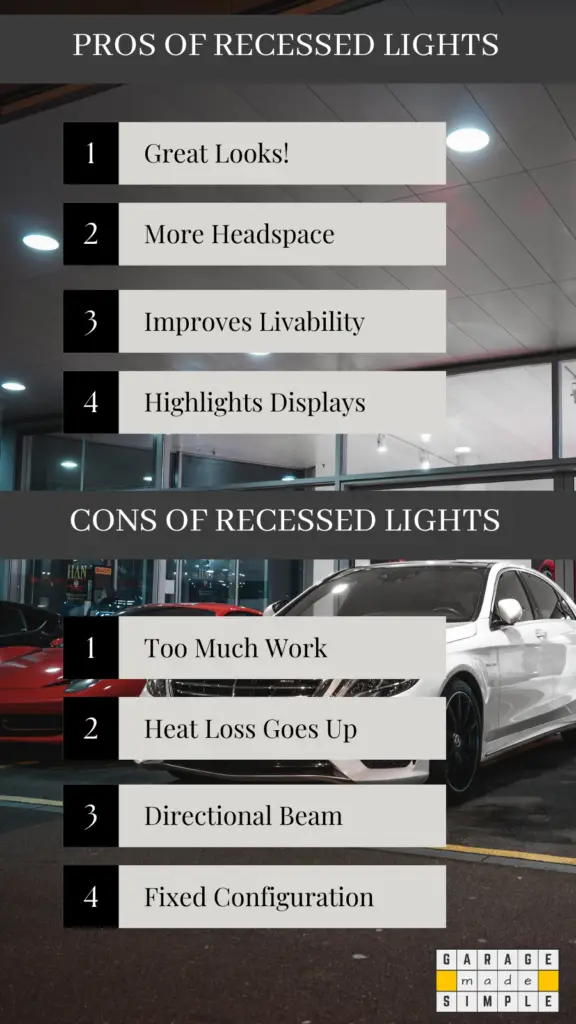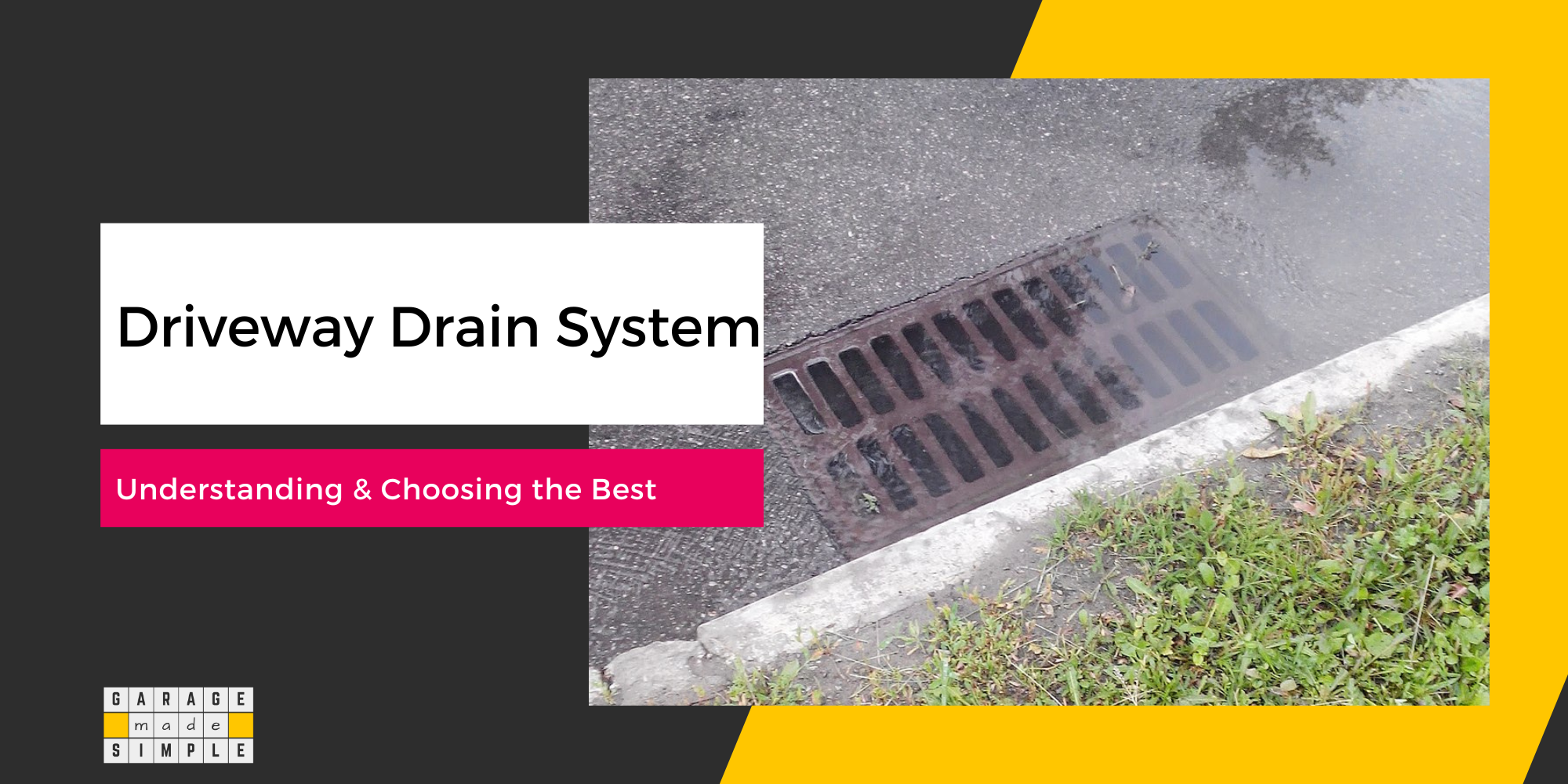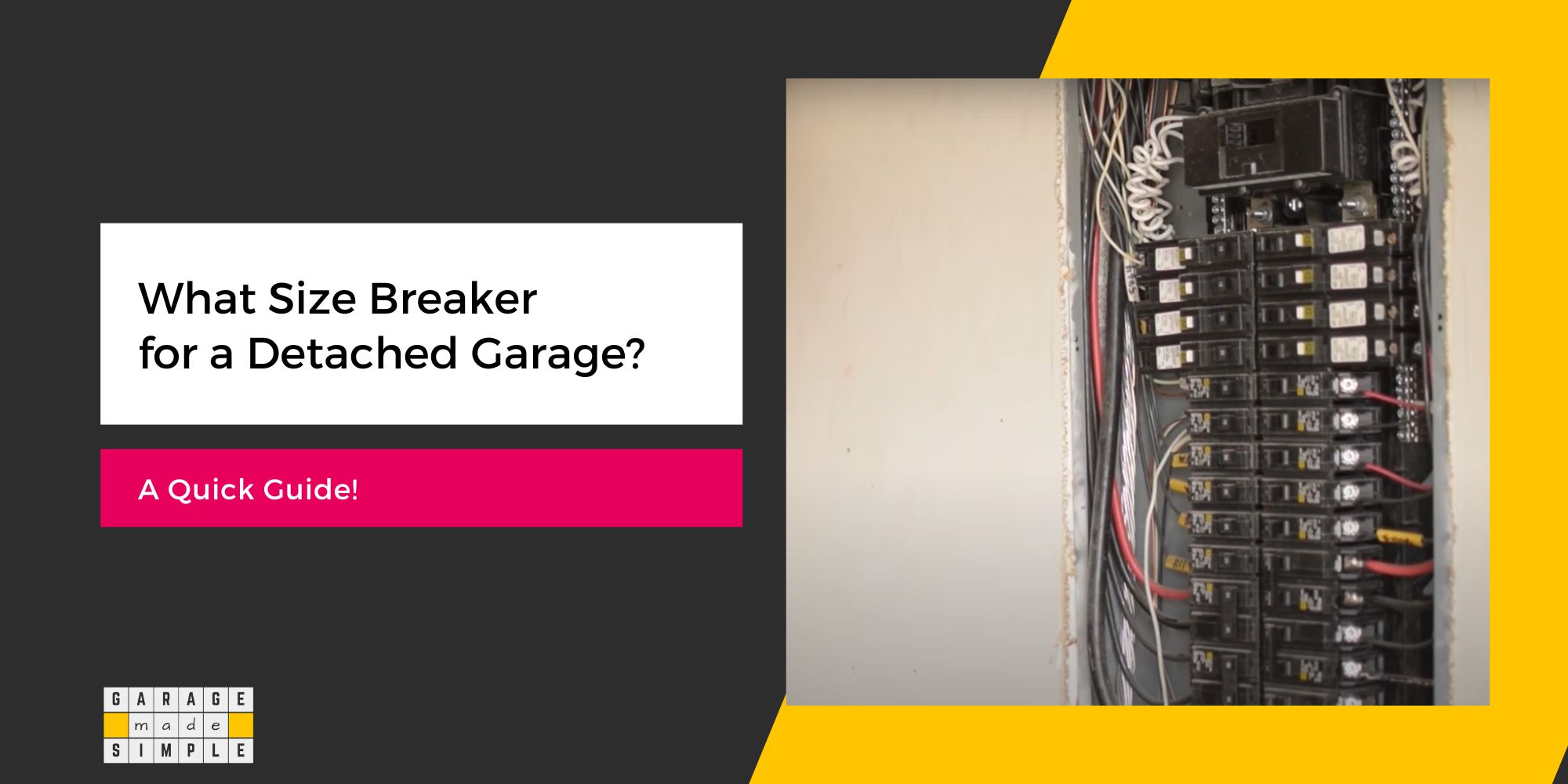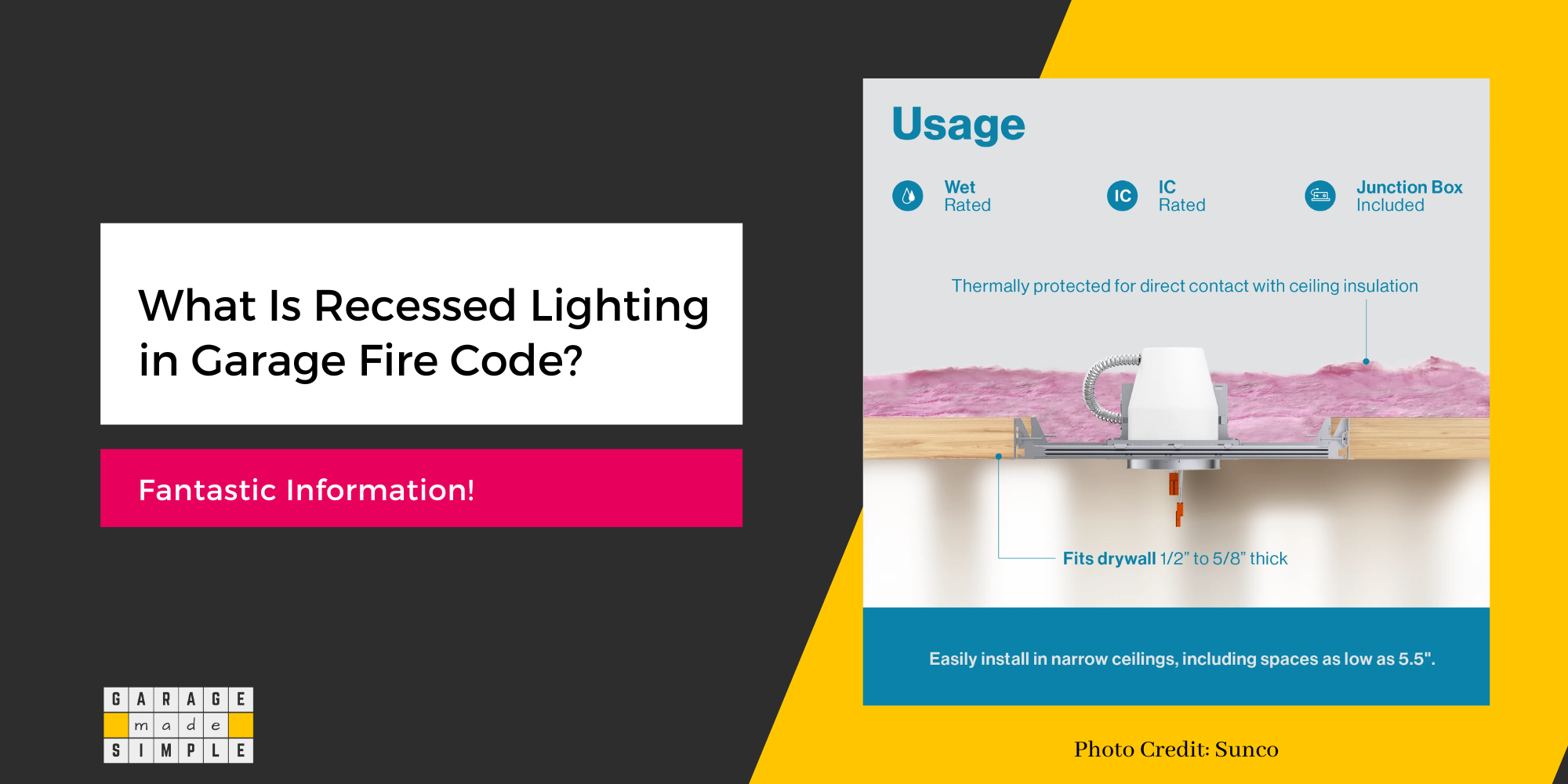Recessed Lights in Garage: A Comprehensive Guide [2024]
As an Amazon Associate, I earn from qualifying purchases.
Pros & Cons of Recessed Lights in Garage
Lighting is crucial for the appearance, comfort, and safety of a garage. Have you considered installing recessed lights? They are a great way to modernize and brighten your garage, but is it feasible?
Yes, you can install recessed lights in a garage. They add a classy look and provide more headspace, making the garage feel like an extension of your home. However, installing recessed lights can be challenging, and expensive, and may require building permits.

Pros:
- Modern Appearance: Recessed lights give a sleek, modern look to your garage.
- Space Efficiency: They increase headspace, making the area feel more open and accessible.
- Enhanced Lighting: They offer excellent illumination, improving visibility and safety.
- Home Integration: They help the garage feel more like a natural extension of your home.
Cons:
- Complex Installation: Installing recessed lights can be complicated and time-consuming.
- Higher Costs: The installation and fixtures can be expensive.
- Permits Required: In some areas, you might need building permits for installation.
- Potential Ceiling Modifications: You may need to modify the ceiling structure, which can be invasive.
Key Takeaways
- Modern and Sleek: Recessed lights provide a stylish, space-efficient lighting solution.
- Enhanced Safety and Comfort: Improved lighting increases safety and makes the garage more comfortable.
- Cost and Complexity: Installation can be costly and complex, possibly requiring permits and ceiling modifications.
What is the Best Lighting for a Garage?
There are usually three ways in which you can attach a light fixture to a garage ceiling.
Shop Lights
Shop Lights are light fixtures that extend below the garage ceiling surface and into the garage space using chains or rods. Check out shop lights manufactured by Sunco and available on Amazon.
Sunco LED Workshop Garage White Shop Light
Sunco LED Workshop Garage White Shop Light
- No wiring is required. Just plug into an existing plug point.
- Interlink up to 4 Shop Lights.
- Can be Flush Mounted on the garage ceiling as well or hung using hooks & chains.
- Has 1100 Beam Angle, 4000 Lumens, and 50,000 Hour Lifespan.
Shop Lights are very popular in garages with high ceilings, as they bring the light source closer to the floor and work areas.
NOTE: Plug-in lights in a garage must be plugged into GFCI outlets only as per 2020 NEC Code.
Wraparound Lights
Wraparound Lights attach directly & flush to the garage ceiling. It has no chains or rods to hang and does not intrude into the garage space.
However, it does extend below the ceiling by a few inches (the thickness of the light fixture). Wraparound Lights are more popular in garages with low ceilings.
Sunco LED Wraparound Garage Ceiling Lights
Sunco LED Wraparound Light Fixture 4FT, Garage Ceiling Lights
- Hard-wired and Flush Mounted for a minimalist look.
- Interlink up to 4 Wraparound Shop Lights.
- Has 900 Beam Angle, 8500 Lumens, and 50,000 Hour Lifespan.
Recessed Lights
Simply put, recessed lighting is when the light source is above the ceiling level and not below it.
Installing garage can lights, which are the same as recessed lights in the garage ceiling, gives you more headspace and a clean look as there is nothing hanging or protruding below the garage ceiling.
Sunco Retrofit LED Recessed Lighting 6 Inch, Dimmable Can Lights
Sunco Retrofit LED Recessed Lighting 6 Inch, Dimmable Can Lights,
- Adjustable clips, suitable for both 5″ and 6″ cans.
- Wide trim to hide messy ceiling cuts.
- Dimmable light.
- Has 900 Beam Angle, 965 Lumens, and 35,000 Hour Lifespan.
The fixture comes in two versions.
Remodel
This is designed to be retrofitted into the existing drywall ceiling. Simply cut a hole in the ceiling and push the fixture through the opening. The fixture comes with clips that prevent it from falling.
New Construction
The fixtures in this case are designed to be screwed into the ceiling joists before the drywall ceiling goes up.
Recessed Lights in Garage: Advantages
You have recessed lighting in your living room, right? So why not recessed lights in your garage? It comes with 4 advantages over flush-mounted or hanging light fixtures.
1. Great Looks!
Now if you own some cool cars, you want to show them off in the best possible light. Have you ever gone to a high-end car showroom that has lighting that belongs in a warehouse? Certainly not!
Basically, there is no match to recessed lights in the garage ceiling when it comes to showing off your priceless babies!
2. More Headspace!
Recessed lights in the garage ceiling work great even for avid DIYers. Why? You get maximum use of the garage height.
With recessed lights in the garage ceiling, you won’t have to worry that much when you are moving a tall ladder or a 8-foot long 2X4 stud.
3. Makes the Garage Livable!
Do you plan to use your garage for more than parking cars, storing stuff, or as a workshop? Are you looking at using part of your garage as a personal gym, home office, or meditation space?
Well, then you certainly do not want to mess up the ambiance with shop lights or even flush-mounted lights.
You need recessed lights in the garage ceiling. Make them LED and dimmable ones at that!
4. Can Highlight Treasures
Do you have an epic surfboard that you store in your garage? And you want your friends to notice it the minute they walk in!
Adjustable recessed light eyeball fixtures are perfect for accent lighting.
Make a statement and highlight your hobbies and sports gear, be it a pair of skis, a canoe or your beer label collection.
Recessed Lights in Garage: Disadvantages
The lighting of any space, including the garage should be a combination of
Primary Lighting – General Lighting for the entire space to brighten it up.
Secondary Lighting – Task Lighting for selected space and to serve a specific function.
Recessed lighting is basically a type of Primary Lighting, just like any other type of ceiling light such as shop lights or wraparound lights.
Now, garage can lights have a few disadvantages too that you should be aware of
1. Takes Too Much Work!
For sure, installing recessed lighting requires a lot more work than other types of lighting installations. You have to cut holes in the drywall or plywood ceiling to begin with!
For some people recessed lighting is a lot of bother!
They like to think it is not worth the effort, especially for a garage. I do not disagree with the thinking but I must say that this is a very personal choice. There is nothing wrong or right about it.
2. Lowers Energy Efficiency
Garage Can Lights require making holes in the garage drywall ceiling. Chances are that after installing the can, there will be some gap through which garage air can move out.
If your garage is heated, you are basically losing heat through your recessed lighting. So your garage heating system has to work extra hard.
In summer, the air movement through the gaps is letting in heat. Your air conditioner has to deal with this extra heat.
In short, recessed lighting could leave gaps in your garage ceiling and push up your energy bills. Unless you really really make sure the gap is well sealed.
3. Unidirectional Light Beam
The light beam from the recessed lighting is unidirectional. It does have a beam angle, but essentially all the light is moving from the ceiling, straight to the floor.
The garage space does not get any benefit from light being reflected off the ceiling or the walls.
In fact, the walls are relatively dark, resulting in a “cave effect”.
Due to this, you may need a lot more fixtures to achieve the same level of brightness. Naturally, the cost goes up!
4. Fixed Configuration
Once you have gone ahead and installed recessed lights in the garage, you are pretty much stuck with it and its configuration. It would require a lot of work should you wish to reposition the lights or move them to another garage or location.
It is a lot easier to reconfigure lighting if you are using shop lights or even wraparound lights.
Recessed Lights in Garage: Permit Requirement
Building Permit
If it is a new garage you will certainly require a local building permit. Building permits are also required when you are remodeling or retrofitting your existing garage with recessed lighting, as there was no recessed lighting before.
You better check this out with the local authorities, especially if you have a FROG (Finished Room Over Garage).
Generally, the rule is that any new wiring requires a building permit. This is even more important and relevant for recessed lights in a garage.
Recessed lights in the garage can be a fire hazard as lights can get hot and if they are in touch with something combustible, a fire can start.
This is why recessed can lights come as either Non-IC Rated or IC Rated. (IC is short for Insulation Contact).
Non-IC Rated
Non-IC-rated fixtures must be at least 3” away from any insulation.
IC Rated
IC-Rated can be in direct contact with insulation as the housing has two layers with an air gap in between to keep the outer layer cool.
Want to know more? Click here to read a really great blog on 2 Types Of Recessed Can Lights: Why Knowing The Difference Can Prevent House Fires by Wilson Home Inspections.
How to Get the Most out of Recessed Lights in Garage?
Now that you have decided to go ahead with installing recessed lights in the garage, why not take care of a few simple things to derive the maximum benefit?
Brightness Level
To ensure that you have the required brightness you need to estimate the lumens required. This is done by multiplying the area of the garage with the recommended foot candle.
A foot-candle is the brightness of the light, one foot away from the source. The recommended foot candle for a garage that is used for parking as well as wall or overhead storage is 50.
Based on 50 foot candles, the lumens required for a 24’X24’ (576 square feet) garage is 28,800 (Area multiplied by recommended foot candles).
For details on lumen calculations kindly check my blog post How To Make Motion Sensor Garage Light Really Helpful?
Layout & Numbers
An LED recessed light will have around 1000 lumens. So you need around 30 recessed can lights. The number is a guideline and you can have up to 10% more or less. Better more than less though!
Generally, a grid layout looks neat, but you can modify it to meet any special requirements. For example, you may want more light in some areas and less in other areas.
TIP: Keep the lights 2’ from the walls to avoid the “cave effect”. Keep a distance of 4’ between lights for uniform brightness on the garage floor.
Go for LED
You have 3 options when it comes to choosing the type of light source.
Regular Incandescent Lamps
Electric current is passed through a tungsten filament housed in an inert vacuum or gas, glass bulb. The filament heats to a temperature that produces and emits light.
Compact Fluorescent Light (CFL)
Electric current is passed through a tube containing argon & some mercury vapor. UV light is emitted which excites a fluorescent coating. This then emits visible light.
Light Emitting Diodes (LED)
Electric current is passed through a diode (semiconductor). The diode emits photons (light) through the principle of electroluminescence.
To produce 800 lumens of light you would need a 60W regular incandescent bulb or a 13-14W CFL or a 9-10W LED.
Clearly LED is 6 times more efficient.
LED lasts longer, emits a crisper light beam, and saves you lots of money.
Choose Warm Daylight
The white light from the LED can appear to have a warm glow or a cold whiteness. The color appearance of a white LED is measured in Kelvin ranging from 2300K to 6000K.
| Kelvin | Light Color |
| 2700 K | Warm White |
| 3000 K | Soft White Glow |
| 4000 K | Daylight Glow |
| 5000 K | Crystal White Glow |
Lower Kelvin is warmer and higher Kelvin is colder. LEDs with a 4000 K rating should be good for a garage.
Dimmer
Don’t settle for the standard LED bulb. Technology has come a long way. Keep up with the times and let the light in your garage reflect your needs and your mood.
Motion Sensor
Why not use motion-sensor garage lights or motion-sensor switches to automate your indoor garage lights?
The J.LUMI YCA1001 Ceiling Mount Motion Sensor Switch available at Amazon should do the job. The motion sensor uses PIR technology and provides 360-degree detection with a 20-ft detection range.
The motion sensor technology is simple to use, will make your life easier, and save you money in the long run.
Secondary Lighting
And finally do not forget secondary lighting. Recessed lights in the garage are ideal as primary lighting. But do install additional task lighting in special areas like your workshop or yoga space.
DISCLAIMER: What Is the Safest Way to Handle Electrical Wires?
This post is for information only. I strongly recommend that all electrical work should be entrusted to licensed professional electricians. In case you do decide to do some of the work yourself, make sure that:
“Treat all electrical wiring, even “de-energized” ones as if it is live, unless it has been locked out and tagged”
You must follow the basic safety guidelines:
- Use protective eyewear, especially when drilling or grinding metal
- Wear insulated rubber gloves when working on any circuit or branch circuit
- Always use insulated tools while working with electricity
- De-energize the electrical wires on which you will be working. Tag the circuit breaker to prevent someone from switching it on accidentally
- Electrical wiring in wet or damp locations or underground must be within a PVC conduit
- Underground wiring conduits should be at least 18 inches below grade as per code
- All receptacles for equipment that could be in wet or damp locations should be equipped with Ground Fault Circuit Interrupter (GFCI)
- Never use old frayed cables, damaged insulation, or broken plugs
- High-voltage equipment should be properly grounded to ensure electricity flows directly to the ground and not through the person in contact with the live wire
Thank you very much for reading the post. I do hope you found it informative and useful.









